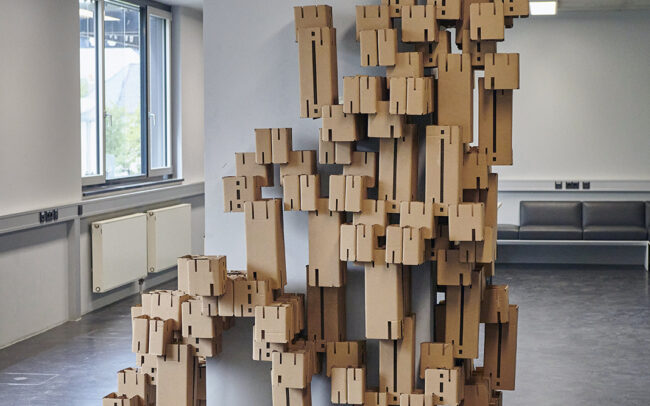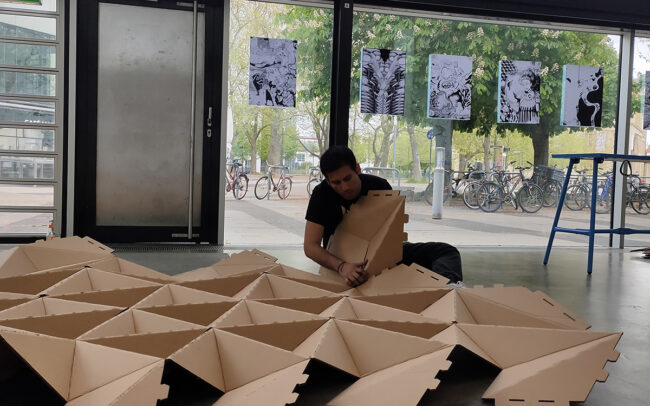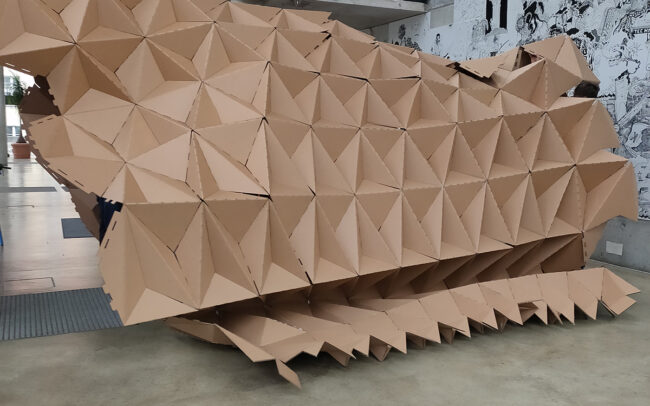This Expertise course held over one week was a deep dive into creation and construction. A group of Master students from the Dessau Department of Design and the Detmold School of Architecture and Interior Architecture embarked on an adventure to parametrically design and digitally fabricate 1:1 pavilions, structures and installations using corrugated cardboard. The three teams delved into the exploration of material and geometry-driven form creation, employing algorithmic thinking and design tools like Rhino and Grasshopper. Large-scale digital fabrication was achieved using cutting-edge laser-cutting technology. Finally each group designed and produced stable, self-standing, and visually striking structural systems. These were subsequently installed and exhibited on campus in Dessau.
Off the Wall
Synonymous with the concepts of the net, slits, and foldability, “Off the Wall” embodies an intricate structure that revolves around a central axis. This axis, represented by a column, forms the backbone of the structure, which expands according to a pattern grounded in structural stability and branching. The individual modules possess both a top and bottom, with large and small slits designed to align with the central locking mechanisms of adjacent modules. This design creates a captivating maze of openings that seamlessly traverse the vertical axis.
Visitors are treated to a diverse array of formations provided by the structure, thanks to the constructivist openings and subtle corner tints. These variations offer unique perspectives and interpretations of the structure from different vantage points. The net – a meticulously arranged collection of lines that compose the envelope’s line graphics – is the outcome of rigorous experimentation in pursuit of a stable, proportional module. Each rectangular cardboard segment is folded inward and temporarily secured with a U-shaped mechanism. This is later replaced by other modules as they are added to the central axis. By using a stacking-based methodology, material usage is optimized due to the high net-to-volume ratio of the modules. This results in an overall structure that is remarkably lightweight, illustrating the ingenious use of materials and design principles in the creation of “Off the Wall”.











